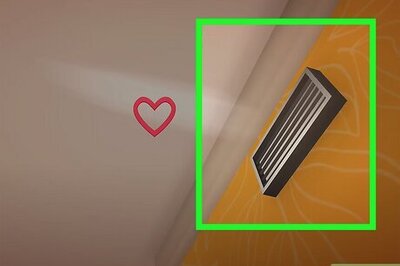
views
New Delhi: Peru, Indonesia, Singapore, Malaysia and some countries in the Middle East have expressed interest in importing the Railways'state-of-the-art Train 18, a senior official said on Friday, even as the ambitious project awaits its first commercial run.
Train 18 which has run at a maximum speed of 180 kmph during its trial run will have its debut journey from Varanasi to Delhi.
"Many countries have expressed interest in the train set and we are happy and proud that an indigenously made product is attracting so much interest. The rolling stock market worldwide is worth about 200 billion dollars and we want a significant share of it. Now, the aim is to successfully run the train," said Member, Rolling Stock, Railway Board, Rajesh Agarwal.
Sources said the train sets currently available worldwide at the standard of Train 18 cost around Rs 250 crore, while the Indian version manufactured by the Integral Coach Factory, Chennai costs around Rs 100 crore.
India, which is the latest entrant into the semi-high speed club, will also host the International High Speed Rail Association (IHRA) conference this February where the Railways is hoping to pitch Train 18 as a mascot of its manufacturing capabilities, sources said.
"The production of Linke Hofmann Busch (LHB) coaches increased from around 685 coaches in 2014-2015 to 4,016 coaches during the current year. The actual production upto December 2018 has touched 3,106 coaches with three more months to go. In fact, total LHB production of first 17 years has been exceeded in the last two years which is unprecedented.
"Train 18 is our latest creation which has taken us 18 months from the idea stage to completion and manufacturing stage," said Agarwal.
With 16 coaches, the train will have the same passenger carrying capacity as that of the Shatabdi Express. The high-tech, energy-efficient, self-propelled (engine-less) train was flagged off by Railway Board Chairman Ashwani Lohani on October 29.
The fully air-conditioned semi-high speed train will cut travel time by 15 per cent as compared to the Shatabdi line of trains.



















Comments
0 comment